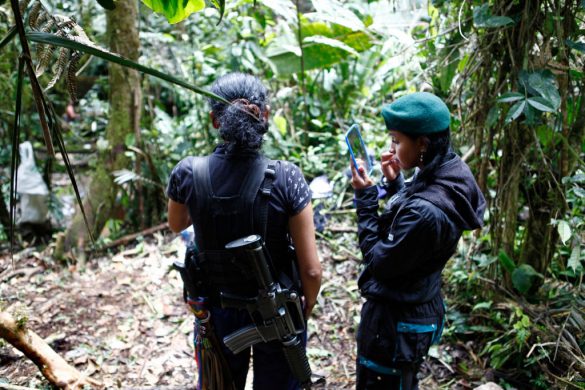SUDAN, 8 October 2008: The top United Nations peacekeeping official met today with leading officials of the regional government of Southern Sudan as part of his week-long familiarization tour of Africa’s largest country where the world body currently fields two peacekeeping missions.
Under-Secretary-General for Peacekeeping Operations Alain Le Roy, accompanied by Secretary-General Ban Ki-moon’s Special Representative in Sudan Ashraf Qazi, held talks with Salva Kiir, President of the Government of Southern Sudan, scene of a devastating 21-year-long civil war before a peace accord was signed in 2005.
– As you know we have 18 operations worldwide, so we have many challenges. However, I started with the Sudan because I think there are many things at stake here, Mr. Le Roy told reporters, explaining why he made the country his first destination since his appointment to his post in August. – As I said, much has been achieved, but there is still a need for the UN to continue to play its role.
Although the comprehensive peace agreement (CPA) ending the north-south civil war, which killed at least 2 million people and displaced 4.5 million others, was signed nearly four years ago, violent clashes still occur. Fighting took place most recently in the town of Abyei, where 98 people were killed and over 50,000 others uprooted in May.
Mr. Le Roy visited Abyei yesterday, meeting with members of the newly formed Joint Integrated Unit and Joint Integrated Police Unit set up to ensure security and policing in the town after May’s violence.
While the CPA remains on track, much needs to be done to implement the agreement within the time remaining and the parties must redouble their efforts to accomplish the outstanding benchmarks, he said.
He stressed that the main challenge is to help to keep the peace in Sudan as a whole, something the people clearly want in a country that is also riven by a fierce war in its western region of Darfur. The UN Mission in Sudan (UNMIS) currently fields nearly 10,000 uniformed personnel entrusted with monitoring compliance with the CPA, assisting in a demobilization and reintegration programme, and helping the return home of those displaced.
A separate hybrid UN-African Union peacekeeping mission for Darfur, known as UNAMID, was deployed at the start of this year and is slated to become the largest UN peacekeeping operation with some 26,000 personnel at full strength. Currently it has some 10,000 troops and police officers on the ground and still lacks essential equipment, including helicopters.
A tripartite committee on UNAMID’s deployment comprising the UN, the African Union and the Sudanese Government held its first meeting yesterday, with all sides pledging every possible effort to speed up deployment.
“The challenges are very high and so we do request the support of GoS (Government of Sudan), without which we cannot achieve this objective,” UN Under-Secretary-General for Field Support Susana Malcorra told reporters afterwards.
Some 300,000 people are estimated to have been killed, either through direct combat or as a result of disease, malnutrition or reduced life expectancy, and more than 2.7 million others have been uprooted from their homes in the five-year Darfur conflict that pits rebels against Government forces and allied Janjaweed militiamen.
Mr. Le Roy is to visit UNAMID’s headquarters in El Fasher, capital of North Darfur state, and stops are also scheduled in South Darfur’s capital, Nyala, and El Geneina, capital of West Darfur.
Kilde: FNs nyhedsservice















